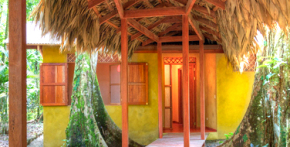
Dream-House Shopping in Costa Rica
The house was for sale. Its mystical vibe seduced them into paying $150,000 in cash. Monkeys, sloths, macaws, butterflies and gekkos would be their neighbors as the couple aged. 'It was definitely impulsive,' the musician told RIJ.


